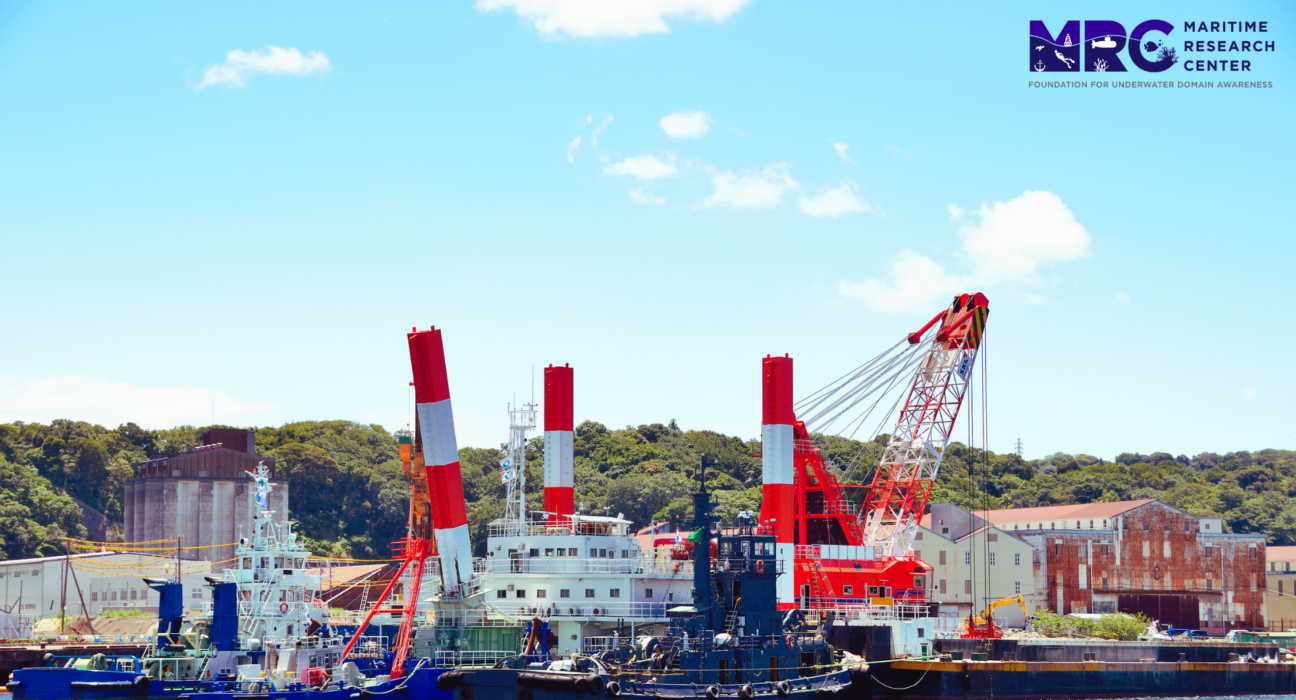- The demand for dredging is exponentially increasing and it has substantial upcoming opportunities in the areas of offshore resource exploration, waterfront development, fishing harbour and navy apart from traditional requirements in port and waterways management.
- As dredging gains importance, its downsides also come into highlight making it imperative to consider sustainable dredging
- Understanding the basic process, development of strong education and training framework as well as exploring other green alternatives to dredging are the key aspects for the growth of dredging industry under sustainable blue economy.
Heading
Dredging is the most popular method of removing the unwanted deposits from water pathway and is used for maintenance of ports, harbour and national waterways. It has a key importance in expansion of ports and regularization of marine traffic. It creates space for construction of bridges, dams and is also used for extracting intoxicants and pollutants from the bottom of water. The demand for dredging is ever increasing and it has opportunities in offshore resource exploration, fishing harbour, waterfront development as well as meeting the needs of the navy.
This illustrates the great economic potential of dredging and why it requires careful attention to maximize economic well-being.
While dredging is very crucial for progress of any country, it is equally important to study its downsides and identify solutions to tackle them. The lack of indigenously studying our tropical waters along with usage of imported western technology directly without tuning it for our needs has further intensified its harmful effects. Dredging widens the river shoreline significantly causing disturbances to the habitats along the shorelines as well as disappearance of the aquatic life. It alters the water turbidity causing the transfer of unwanted organisms and existing contaminants to spread further into the water bodies. Loosening of soil causes contaminants which were previously held fast in the ground to find their way into the water and spread across larger area. It also facilitates soil erosion. While all these negatives do not weigh much against the vital role played by dredging in economic development like expanding port systems for international trade and commerce, these negatives do add up over decades and given the precarious condition faced by marine world currently, they will cause debilitating effects in the times to come.
For instance, use of right dredgers is a crucial decision to be taken during the process. The hopper dredgers are known to be a major cause of turbidness during the suction process. So, using it in places where toxic contaminants are fixed in soil will present a major threat of pollution.
Understanding the Process of Dredging
Knowing the dredging process is the first step for developing a good framework for sustainable dredging. Dredging is the process of removing sediments and debris from the bottom of water bodies using special devices called ‘dredgers. Dredger is lowered to the bottom of water body where usually a rotating cutter-bar loosens the sediment. It is then sucked in using a submersible pump and dumped at the disposal site using disposal barges or dump scows.
The efficiency of cargo transport via water increases with ship size, however, natural harbours have limitation of depth making dredging an inevitable process in port business. Dredging is of two types: Maintenance and Capital dredging. The process of removing silt periodically to maintain the operational depth is termed as Maintenance Dredging. The study of sediment transport is crucial in deciding the rate of sediment depositing over time and the frequency of dredging operation. Capital dredging takes place when navigation channels, basins etc. are required to be further deepened and widened by cutting and removing soil and rock strata. It is a one-time activity and expenditure and leads to higher amount of maintenance dredging to maintain that depth.
Dredged sand has high selling value in construction industry, hefty profit is also made by selling the dredged sand to countries like Maldives and Singapore which are thriving on beach tourism. Thus, it is no surprise that this natural resource is of crucial importance and many people resort to illegal methods without following rules and regulations to gain high profit margin. Cases of rampant illegal dredging have come up in regions around Thane creek in Mumbai, from Som river in Dungarpur district in Rajasthan and many more across the country. All these lead to excessive amount of dredging without following guidelines and hence magnifying the harmful effects caused by it to the environment.
Developing a Framework for Education and Training in Dredging
Dredging had been a more of practical experience domain rather than education and training. However, with technological advancements and rising awareness of need for sensitization towards marine environment, it has become imperative that a formal approach of training is introduced in the dredging industry. Also, with rising cost and complexity of the instruments, consequence of ignorance is too serious and not acceptable to companies. In the past decade, there has been some interest in formalizing training in dredging sector. In February 2022, the Union Minister for Ports, Shipping and Waterways inaugurated the dredging museum and skill development facility in Visakhapatnam, Andhra Pradesh. The Dredging Corporation of India (DCI) had already been entrusted with development of dredging harbour and dredge training institute with research and development facility. With the help of Indian Maritime University, the government is also looking towards indigenisation of dredge design and spare parts to save repair time and decrease foreign exchange exposure.
However more concrete steps are required for all-round growth and development in the dredging industry. Education in dredging covers a wide range and should be inclusive of the different categories of people involved in the industry including dredge designers, builders, contractors, operators, clients, consulting engineers, financial and legal advisors as well as environmentalists. The starting point must be the training of dredge operators using simulators. Several sophisticated simulators are available in the market which can reproduce the behaviour of the actual dredger. An example is the Royal Boskalis Westminster Simulator. One major drawback of this however is the large capital investment initially. An alternative for this is deployment of special training officer for operational functions on board. Employing retired but highly experienced dredge operators from top companies of both India and abroad for job training can provide some leverage. Short training courses complemented by project and laboratory work and including modules of contract conditions, project management, environmental and business topics is recommended.
The proposition to build National Institute of Dredging Training which intends to provide trained dredging professionals, needs a push for benefitting both government and private dredging companies.
For small dredging operators who are unable to provide overseas professional training to their staff due to financial constraints, availability of low cost, good quality books and guides pertaining to Indian settings becomes crucial and their shortage problem needs to be remedied.
Giving some attention on educating the general public about the economic and ecological benefits of dredging, will make it easier for government to win public support for their dredging projects and policies. These could be delivered via publications, seminars and media channels directed to a broader public and not just dredging fraternity.
Finding Sustainable Alternatives to Dredging
Dredging is a well-known, reliable, and hard to replace technology due to its popularity. However, given its environmental impacts and its inability to prevent siltation or tackle the root cause of siltation makes it imperative to research alternate technologies.
Ordinary dredgers are broadly of two types: Mechanical and Hydraulic. Mechanical dredgers excavate from the bottom surface using a bucket or clamshell. This disperses large amount of debris and has considerable environmental impact. Hydraulic dredges suck up sediment-water mixture and transfer it via pipelines. They are often imprecise and create currents causing resuspension of sediments. The overall cost of hydraulic dredges is more.
The first category of alternatives is using fixed infrastructures called ‘anti-sedimentation structures.’ They are designed to minimize the amount of sediment to be dredged from harbour inlets and are usually installed in existing ports. In the second category we have ‘remobilising sediment systems’ which uses water injection or mechanically moving devices like propellors to lift and separate the silt from the seabed. The third category is ‘sand by-passing plants’ which are fixed or semi-fixed structures producing a physical transfer of silt across the entrance channel. They continuously remove the littoral material which could have been a potential silt and thus guarantee siltation prevention over time. They also have very minimal environment impact but have high installation costs. Sometimes remobilising systems are coupled with sand by-passing plants to increase the overall efficiency. The important methodologies under each category are listed below:
Anti-Sedimentation Structures
- Sand Traps
- Seawells
- Current deflection walls
- Pile groynes
Remobilising Sediment Systems
- Water injection dredging
- The Neptune
- Fluidization Plants
- Submarine sand shifter
- Turbo units
Sand by-passing plants
- Centrifugal Pump
- Punaise Pump
- Auto-flushing system
- Jet Pump
- Educator
- Ejector
- Mobile Installation
In conclusion, implementation of sustainable strategies for development of ports, harbour and waterways includes several key areas of which sediment transport management is a crucial aspect. Diligent survey methods of the target area before implementing any of the strategies also plays an important role in making informed decisions. Further investigations are also required to optimize investment, operational costs and maximizing work output.

Rishika Khanna
About Author
Rishika Khanna is a Research Fellow at MRC. Her research project at MRC revolves around Sediment Management in tropical waters with focus on Sediment Transport Systems. She is a final year B. tech student in Mechanical Engineering at IIT Delhi and had also been associated with MRC earlier as an intern. She joined MRC to expand her research domain and apply her learnings for the development of UDA.



